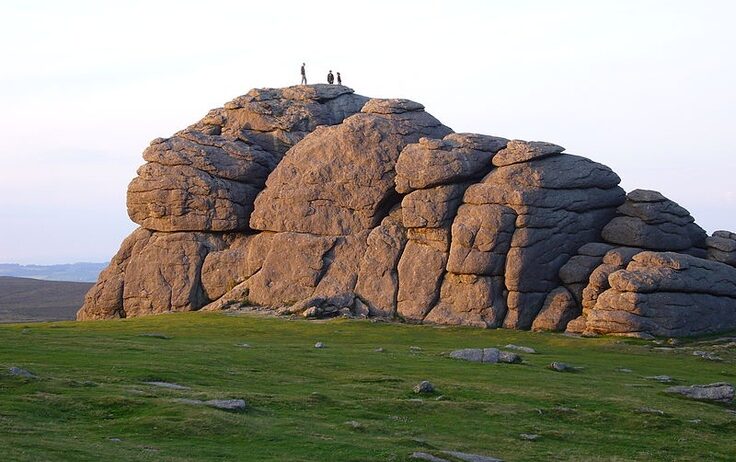Climate zones are not merely atmospheric phenomena; they serve as the very tapestry on which nature weaves intricate patterns of sculpting and erosion. Chemical weathering is a key process in this dynamic interplay between climate and the geosphere. Understanding the complex relationship between chemical weathering and specific climate zones can foster a deeper appreciation for the forces that shape our natural world.
To delve into this relationship, it is essential to grasp the essence of chemical weathering. Unlike physical weathering, which relies on mechanical forces to break down rocks, chemical weathering transforms minerals through chemical reactions. This process often involves water, acids, and specific environmental conditions, leading to the disintegration and alteration of rocks and minerals. The result is a myriad of formations that not only highlight nature’s artistry but also contribute to soil fertility and the release of essential nutrients.
Temperature and moisture are pivotal factors influencing the rate of chemical weathering. As such, it is primarily in warm, humid climates that this phenomenon thrives. These climates are characterized by significant rainfall and elevated temperatures, creating an environment ripe for chemical reactions. In regions like the tropics and subtropics, the abundance of moisture and warmth enhances the weathering processes, ultimately resulting in remarkable geological features.
The tropical rainforest is perhaps the quintessential climate zone that nurtures chemical weathering. Here, lush vegetation and incessant rainfall foster a rich tapestry of life. The organic acids produced from decomposing plant matter interact with minerals in the soil and rock, facilitating the breakdown of materials such as feldspar into clay minerals. This transformation not only enhances the soil’s fertility but also contributes to a diverse array of geochemical processes that shape the terrain. The chemical weathering in these zones often leads to the formation of bauxite, a critical ore for aluminum extraction, underlining the economic implications of these natural processes.
Conversely, in the humid subtropical zone, chemical weathering also plays a significant role. With distinct seasonal variations but generally ample rainfall, these climates witness a combination of warm temperatures and moderate humidity. The dissolution of limestone in such areas can lead to the creation of karst landscapes, characterized by sinkholes, caves, and unique topography. The interplay of acidic rainfall with carbonate rocks epitomizes the creative prowess of chemical weathering in sculpting the earth’s surface.
Additionally, regions with seasonal wetness and dry spells, like Mediterranean climates, showcase a different narrative. Here, chemical weathering is largely influenced by the alternating wet and dry seasons, which can create conditions for specific mineral alterations. For instance, during the wet period, the influx of moisture allows for the dissolution of minerals, while the dry spells may promote the formation of secondary minerals and the recrystallization of certain rocks. While not as pronounced as in tropical climates, these processes reveal how chemical weathering still tailors the landscape even under fluctuating moisture conditions.
The interplay between vegetation and chemical weathering deserves particular attention as well. Plant roots not only contribute organic acids that enhance chemical weathering but also promote the disintegration of rocks through their physical presence. In temperate zones, deciduous forests exhibit a complex relationship with chemical weathering, where leaf litter and microbial activity add essential organic matter to the soil, accelerating mineral breakdown and enhancing local biodiversity.
Interestingly, chemical weathering also finds its place in a phenomenon known as the rock cycle. This cycle illustrates how rocks are continuously transformed in response to various environmental conditions, including climatic changes. As temperatures rise due to climate change—often a consequence of human activities—chemical weathering rates may accelerate, altering landscapes at an unprecedented pace. This transformation raises critical questions about resilience, sustainability, and the potential for increased soil erosion and nutrient leaching, all of which have direct implications for agriculture and ecosystem health.
In arid and semi-arid regions, however, the narrative shifts dramatically. While physical weathering predominates in these areas, chemical reactions still occur, albeit at a significantly reduced rate. Salt weathering, for instance, can lead to the disintegration of rocks as salt crystals form and exert pressure on the rock structure. Nonetheless, the sparse vegetation and limited moisture in these climates inhibit the robust chemical weathering processes witnessed in more humid areas.
Understanding the relationship between climate zones and chemical weathering not only illuminates the mechanisms involved in earth’s sculpting process but also underscores the profound impact of climate change on these systems. As temperatures rise and precipitation patterns shift, the natural balance that dictates the rate and type of weathering will inevitably transform. This evolution poses existential questions about ecosystem stability, agricultural viability, and the very fabric of the landscapes we inhabit.
In conclusion, exploring the intricacies of climate zones and their influence on chemical weathering enriches our appreciation for nature’s sculpting process. From the verdant depths of tropical rainforests to the serene karst formations of subtropical regions, chemical weathering continues to carve the Earth’s surface in remarkable ways. As we witness changes in our climate, it becomes imperative to consider the delicate interplay between these processes and to advocate for sustainable practices that honor our planet’s legacy. The future of our environments hinges on a collective commitment to understanding and mitigating the influences of climate change—a journey that begins with awareness and leads to actionable change.





